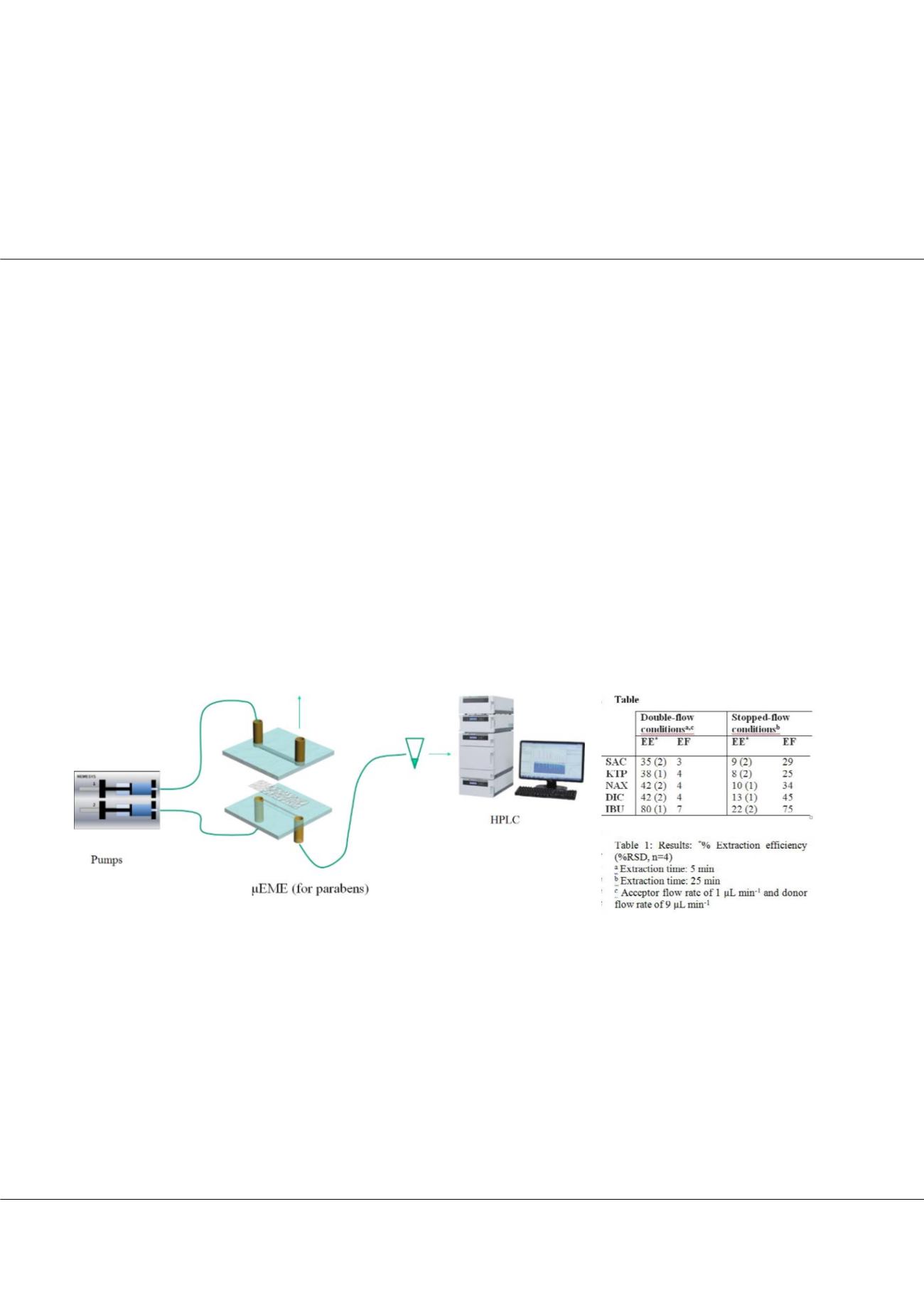

Page 75
conferenceseries
.com
Volume 8, Issue 5 (Suppl)
J Chromatogr Sep Tech, an open access journal
ISSN: 2157-7064
Chromatography 2017
August 07-09, 2017
August 07-09, 2017 | Rome, Italy
4
th
World Congress on
Chromatography
Double-flow or stopped-flow conditions as different operating working modes formicrofluidic devices
in sample preparation depending on the application field
María Ramos Payan
IMB CNM, Spain
T
his experimental work reports the study based on two working modes that can be used when liquid phase micro extraction
is integrated into a microfluidic-chip device. The study compares enrichment factors, extraction efficiencies and detection
and quantification limits. The microfluidic device has been tested with acid drugs as model analytes. Transport phenomena
are faster on the micro-scale, and therefore extractions can be carried out quickly. This comes from the fact that the transport
in LPME is governed by diffusion and that the time required for mixing scales with the square of the length, and then, the
diffusion path is much shorter in microfluidic devices on chip. The study was carried out using a microfluidic device consisting
on two patterned plates of poly (methyl methacrylate), which are symmetrical. In the front side, a channel was used as donor
(sample) solution whereas in the back side, the channel was used as acceptor phase. Five non-steroidal anti-inflammatories
were extracted from acid sample solution (pH 1.5), through the SLM, and into alkaline solution functioning as acceptor phase
(pH 12). Two different working modes were tested: double-flow mode and stopped-flow mode. For double-flow working
mode, a donor flow rate within the range of 1-30 µL min-1 was tested, keeping the acceptor flow rate at 1 µL min-1 (table 1).
However, the acceptor flow rate was stopped during the extraction (stagnant conditions). As seen in table 1, when the acceptor
flow is turned off during the extraction time, high enrichment factor significantly increases with the extraction time for all
compounds. As an example, the IBU is enriched by a factor of 75 after 25 minutes extraction consuming only 500 µL of sample.
On the other hand, a double-flow working mode is preferred when very high extraction efficiencies are desired.
Biography
Maria Ramos Payan has expertise in improving sample preparation techniques focused on microfluidic-chip devices as miniaturization. The novelty of her
microfluidic devices offer more advantages than the existing methodologies. The devices work either using biological and environmental samples and can be
coupled on-line to HPLC or Mass Spectrometry. She has also demonstrated the applicability of microchip devices for diagnostic diseases as diabetes. She has
worked at different institutions (University of Seville, University of Huelva, University of Lund, University of Copenhagen and University of North Carolina, USA).
Currently, she works at Microelectronic National Center of Barcelona and Universitat Autonoma of Barcelona with the aim of implementing optical detection into
microfluidic devices for multiple applications.
ramospayan@us.esMaría Ramos Payan, J Chromatogr Sep Tech 2017, 8:5(Suppl)
DOI: 10.4172/2157-7064-C1-032
















